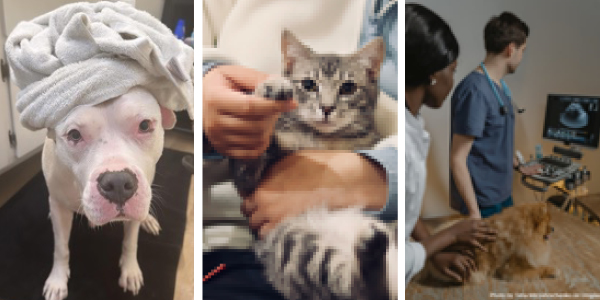We love our pets. They are a part of our families and we want the best for them as much as we want the best for our partners and children. Just like with people, pets get injured and sick, and when they do, we want to be able to meet their medical needs just as we would any member of our family. Emergency vet care can be very expensive, and without savings, a pet medical emergency can create a financial crisis.
Pet insurance can be wise, but you must weigh the pros and cons before choosing a policy. Let’s look at some considerations.
Pros of Pet Insurance:
1. Financial Security: Pet insurance can protect you from unexpected veterinary expenses. Illness, accidents, and emergency treatments. It provides peace of mind, especially during critical situations.
2. Cost Savings: You’ll be responsible for footing the entire veterinary bill unless you have insurance. Pet insurance reimburses a portion of eligible expenses, reducing the total cost.
3. Coverage for Chronic Conditions: Some plans offer comprehensive coverage for accidents and illnesses, including some chronic conditions. This can help you manage long-term health issues.
4. Diagnostic Tests and Surgeries: Diagnostic tests, surgeries, hospital stays, and medications will be covered in most plans.
Cons of Pet Insurance:
1. Cost: Premiums can be expensive. Premiums can increase as your pet ages and as other general costs increase. Consider the balance between monthly premiums and potential savings.
2. Exclusions: Policies have exclusions, such as pre-existing conditions or elective procedures. Hereditary and congenital conditions, behavioral issues, dental care, and routine wellness care are not usually covered. There may also be age and breed restrictions. Read your policy and any documentation from the insurer and ensure you understand it.
3. Claim Process: Unlike typical medical insurance where your doctor will bill you for any copayment after insurance, with pet insurance you will need to pay upfront and then submit a claim for reimbursement from the insurance carrier. Understand the process and payment time.
4. Limited Catastrophic Bills: Most pet owners won’t face catastrophic bills, making insurance less necessary for routine care. However, if you’re one of the unlucky few, having insurance can be a lifesaver.
What to Look for When Selecting a Pet Insurance Policy:
1. Coverage Types: There are many options. Select from accident-only, accident, and illness, or wellness coverage. Consider your pet’s needs and budget.
2. Exclusions: Understand what’s excluded (e.g., pre-existing conditions) and any waiting period between applying and when coverage starts.
3. Policy Limits: Policies will have annual, per-claim, and lifetime payment limits. Ensure they align with potential costs.
4. Deductibles and Co-Payments: Like medical insurance for people, you will have to pay a deductible (the amount you pay before insurance kicks in) and co-payments (your percentage share of the covered expenses).
5. Provider Reputation: Research insurers, read reviews and compare ratings. Look for reliable customer service and prompt claims processing.
Due to the cost of premiums, copays, and deductibles, many people find it financially advantageous to have a pet savings fund instead of an insurance policy. Pay the premiums to yourself and save it in a high-yield savings account. That way you have the money set aside whether you need it or not.
Learn more at:
More states legislate pet insurance - News - VIN
Pet Insurance (naic.org)
Is Pet Insurance Worth It? - Consumer Reports
https://youtu.be/yHPgoPtNg7g?si=x8Sbd-nCWa6eyv8F The Ultimate Guide to Pet Insurance 2024 Edition
Is Pet Insurance a Scam?

